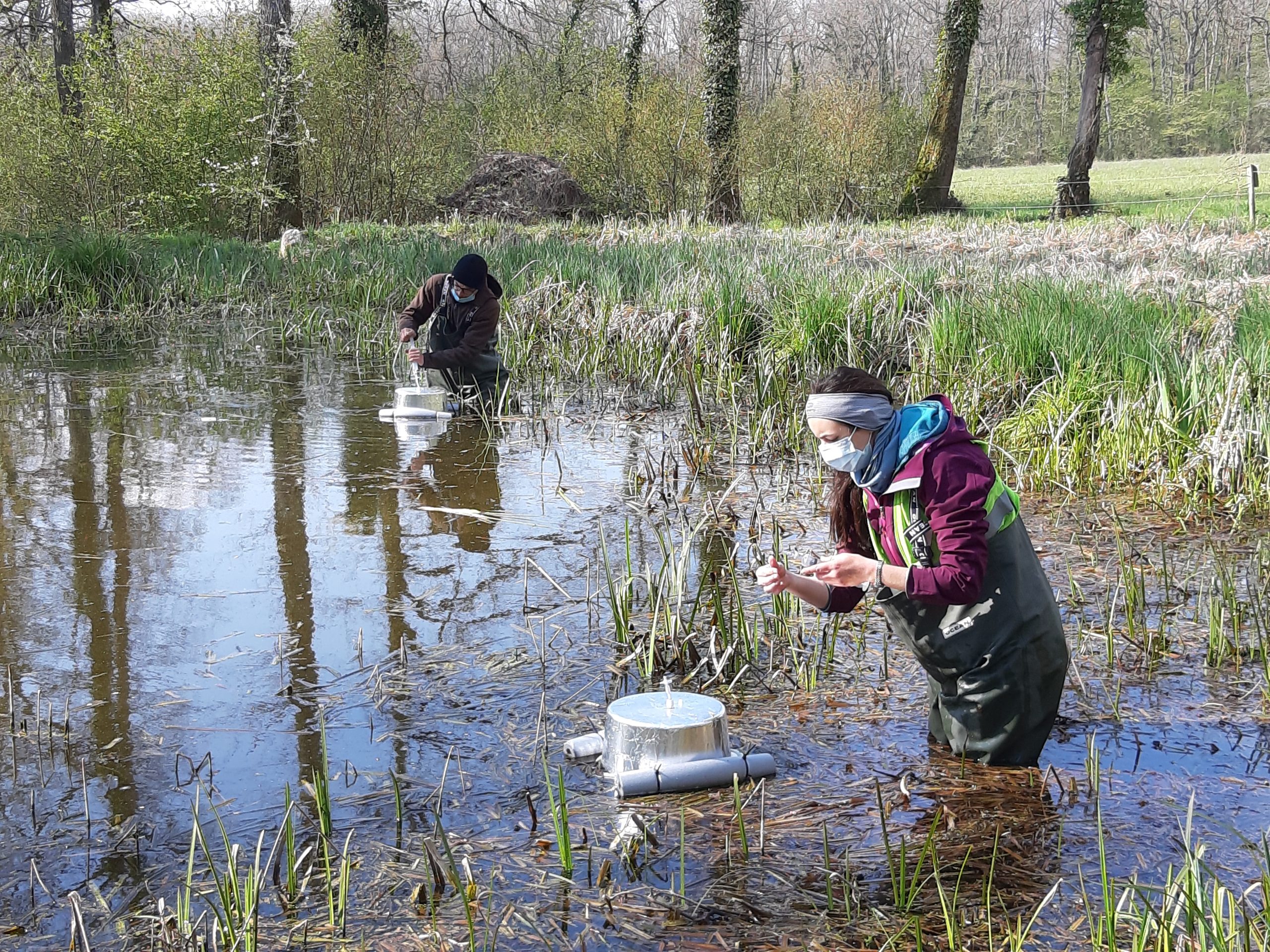Approximately 1,000 ecologists from around the world gathered (physically or virtually) at the International Congress of Ecology (INTECOL) from 28 August to 2 September in Geneva, Switzerland, to better understand how we can create a new paradigm to live in harmony with nature.
While ecology as a science will not resolve by itself the desperate challenges that we have created for ourselves it is evident that our society needs ecology to help us manage the biodiversity crisis and the ecosystem services that rely on it, in order to help us guide towards a more sustainable future.
In this framework, the implementation of Nature-based Solutions allows us to address several important societal challenges. This was illustrated in a special session focused on pondscapes organized by PONDERFUL partners (Beat Oertli, Malgorzata Blicharska, Aurélie Boissezon, Maria Cuenca Cambronero and Sandra Brucet). This session focused on how the creation, restoration and management of ponds and pondscapes can efficiently promote biodiversity and offer several Nature Contributions to People. In particular, it explored how these small waterbodies can helps us in our efforts on adaptation and mitigation to climate change.
In this session, some of the PONDERFUL researchers presented the first results related to measurements of NCPs and biodiversity in pondscapes, focusing on case studies from Spain and Switzerland. Others in the team also explained some of the benefits of pondscapes for biodiversity (including pollination), water purification and stormwater retention. Both local and international scales were considered in this session.
Early results on carbon trapping in a Swiss pond
One of the most innovative aspects of PONDERFUL is our research to calculate the carbon balance of ponds by studying both the carbon stored and the carbon released.
At INTECOL, the PONDERFUL team from HES-SO in Switzerland shared some exciting early results of their research on carbon trapping in ponds. Our preliminary results show that ponds may act as powerful carbon sinks.
This included an example of a calculation that has been made for a pond located in the Swiss pondscape “Bois de Jussy”, which is in a woodland near Geneva.
These ponds trapped carbon through photosynthesis of algae and vascular plants and released different gases, which were mainly methane. The quantity was expressed in equivalent CO2 to take into account the global warming potential of each gas (GWP100).
These encouraging results now need to be consolidated with the carbon balance that is being calculated in all other studied ponds in each of the eight countries in PONDERFUL.
If these initial results are confirmed, there is the potential for pondscapes to be recognised as blue carbon stocks, which could help us to reach our international commitment for green-house gas emissions, set out in the Paris Agreement.
Over the coming months, we will be addressing this important question: in which circumstances does a pond act as a carbon sink? And, in which circumstances does a pond act as a carbon source?

The figure shows an example of carbon balance calculation made one pond in Switzerland thanks to data collected during 2021. Author of the slide: Julie Fahy.
By Beat Oertli & Aurelie Boissezon (HES-SO)

